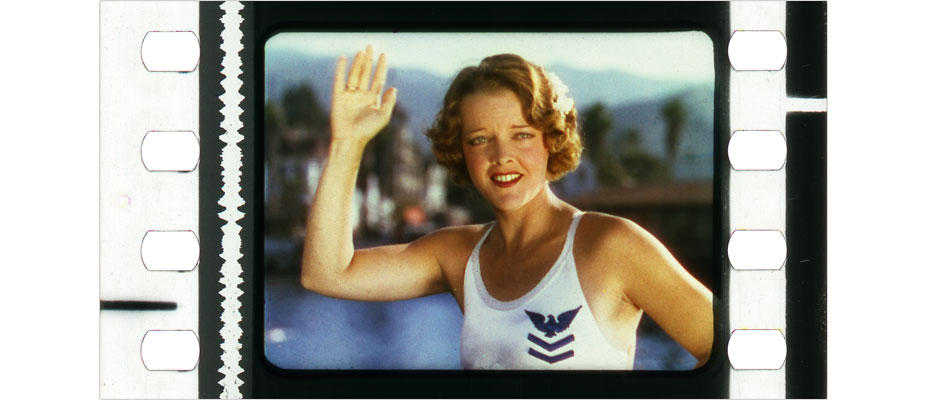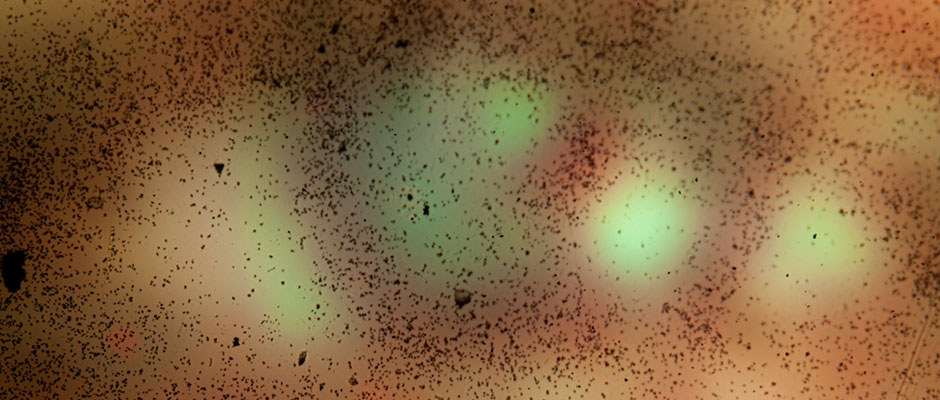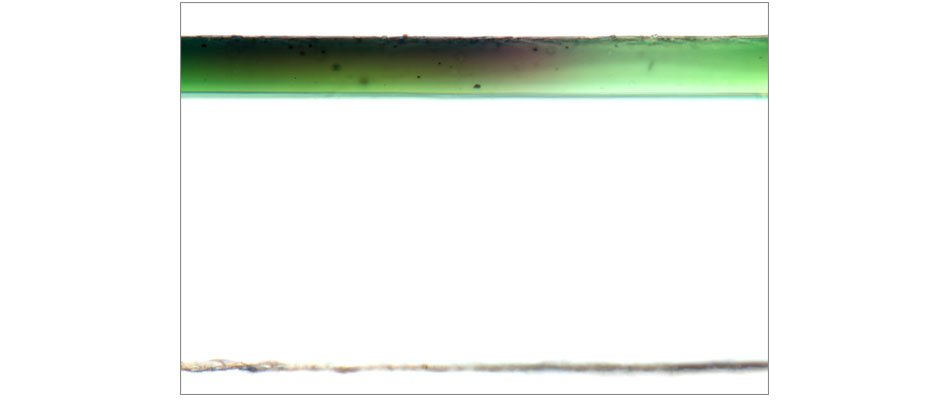


35mm print on cellulose nitrate support

A "key" image made of silver particles improves definition and contrast.

Dyes are absorbed into the gelatin layer.
Process DescriptionA three-color subtractive process utilizing a dye transfer printing technique similar to lithography. Also known as Process 4, this proprietary process resulted in three black and white separation negatives, each recording a color record (blue, red, and green). These separation negatives were used to expose a special matrix film containing a treated gelatin layer which hardened when exposed. A matrix was created for each color record, and after exposure, the soft gelatin of unexposed areas was washed off each matrix. The matrices were then dyed with yellow, cyan, or magenta and pressed into direct contact with a blank receiving film that imbibed each dye successfully in registration. Kodak manufactured all film elements necessary for 3-color Technicolor.There were several different Technicolor processes in use from 1915 through to the 1970s, and there was even a brief revival of Technicolor in the 1990s. However, the 3-color dye transfer process of 1932 made Technicolor a successful company, and all further printing innovations were improvements on the basic dye transfer technology established by this process. |
|